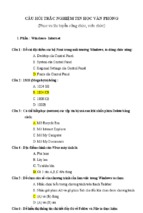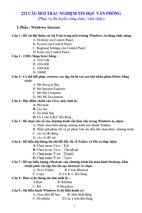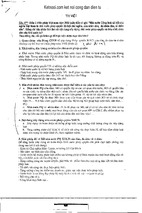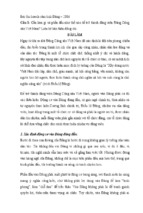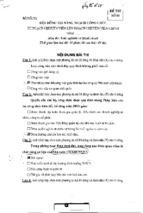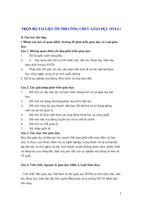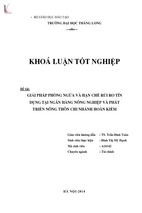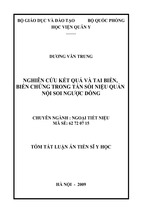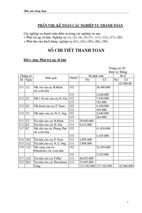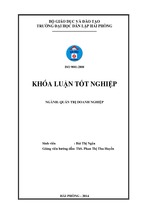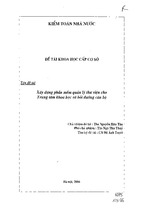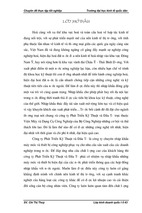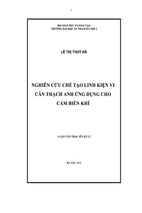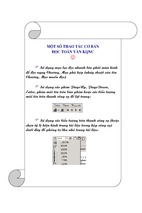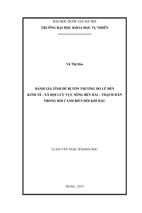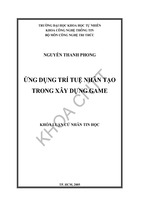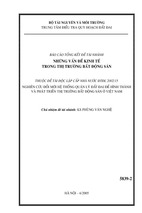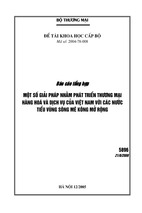The Publisher has taken reasonable care in the preparation of this book, but makes no expressed or implied warranty of any kind and assumes no responsibility for any errors or omissions. No liability is assumed for incidental or consequential damages in connection with or arising out of information contained in this book. The Publisher shall not be liable for any special, consequential, or exemplary damages resulting, in whole or in part, from the readers’ use of, or reliance upon, this material. Independent verification should be sought for any data, advice or recommendations contained in this book. In addition, no responsibility is assumed by the publisher for any injury andor damage to persons or property arising from any methods, products, instructions, ideas or otherwise contained in this publication.
NEUROSCIENCE RESEARCH PROGRESS SERIES
COLOR PERCEPTION:
PHYSIOLOGY, PROCESSES
AND ANALYSIS
No part of this digital document may be reproduced, stored in a retrieval system or transmitted in any form or
by any means. The publisher has taken reasonable care in the preparation of this digital document, but makes no
expressed or implied warranty of any kind and assumes no responsibility for any errors or omissions. No
liability is assumed for incidental or consequential damages in connection with or arising out of information
contained herein. This digital document is sold with the clear understanding that the publisher is not engaged in
rendering legal, medical or any other professional services.
NEUROSCIENCE RESEARCH
PROGRESS SERIES
Current Advances in Sleep Biology
Marcos G. Frank (Editor)
2009. ISBN: 978-1-60741-508-4
Dendritic Spines: Biochemistry, Modeling and Properties
Louis R. Baylog (Editor)
2009. ISBN: 978-1-60741-460-5
Relationship between Automatic and Controlled Processes
of Attention and Leading to Complex Thinking
Rosa Angela Fabio
2009. ISBN: 978-1-60741-810-8
Neurochemistry: Molecular Aspects, Cellular Aspects
and Clinical Applications
Anacleto Paços and Silvio Nogueira (Editors)
2009. ISBN: 978-1-60741-831-3
Sleep Deprivation: Causes, Effects and Treatment
Pedr Fulke and Sior Vaughan (Editors)
2009. ISBN: 978-1-60741-974-7
Color Perception: Physiology, Processes and Analysis
Darius Skusevich and Petras Matikas (Editors)
2009. ISBN: 978-1-60876-077-0
NEUROSCIENCE RESEARCH PROGRESS SERIES
COLOR PERCEPTION:
PHYSIOLOGY, PROCESSES
AND ANALYSIS
DARIUS SKUSEVICH
AND
PETRAS MATIKAS
EDITORS
Nova Science Publishers, Inc.
New York
Copyright © 2010 by Nova Science Publishers, Inc.
All rights reserved. No part of this book may be reproduced, stored in a retrieval system or
transmitted in any form or by any means: electronic, electrostatic, magnetic, tape, mechanical
photocopying, recording or otherwise without the written permission of the Publisher.
For permission to use material from this book please contact us:
Telephone 631-231-7269; Fax 631-231-8175
Web Site: http://www.novapublishers.com
NOTICE TO THE READER
The Publisher has taken reasonable care in the preparation of this book, but makes no expressed or
implied warranty of any kind and assumes no responsibility for any errors or omissions. No
liability is assumed for incidental or consequential damages in connection with or arising out of
information contained in this book. The Publisher shall not be liable for any special,
consequential, or exemplary damages resulting, in whole or in part, from the readers’ use of, or
reliance upon, this material.
Independent verification should be sought for any data, advice or recommendations contained in
this book. In addition, no responsibility is assumed by the publisher for any injury and/or damage
to persons or property arising from any methods, products, instructions, ideas or otherwise
contained in this publication.
This publication is designed to provide accurate and authoritative information with regard to the
subject matter covered herein. It is sold with the clear understanding that the Publisher is not
engaged in rendering legal or any other professional services. If legal or any other expert
assistance is required, the services of a competent person should be sought. FROM A
DECLARATION OF PARTICIPANTS JOINTLY ADOPTED BY A COMMITTEE OF THE
AMERICAN BAR ASSOCIATION AND A COMMITTEE OF PUBLISHERS.
LIBRARY OF CONGRESS CATALOGING-IN-PUBLICATION DATA
ISBN: 978-1-61761-866-6 (Ebook)
Available upon request
Published by Nova Science Publishers, Inc. � New York
CONTENTS
Preface
Chapter 1
vii
Cortical and Subcortical Processing of Color:
A Dual Processing Model of Visual Inputs
Hitoshi Sasaki
1
Chapter 2
Color: Ontological Status and Epistemic Role
Anna Storozhuk
51
Chapter 3
The Biological Significance of Colour Perception
Birgitta Dresp-Langley and Keith Langley
89
Chapter 4
Individual Differences in Colour Vision
M.I. Suero, P.J. Pardo, A.L. Pérez
Chapter 5
Color-Sensitive Neurons in the Visual Cortex:
An Interactive View of the Visual System
Maria C. Romero, Ana F. Vicente,
Maria A. Bermudez and Francisco Gonzalez
125
161
Chapter 6
Is Colour Composition Phenomenal?
Vivian Mizrahi
Chapter 7
Color Image Restoration and the Application
to Color Photo Denoising
Lei He
203
Color in Psychological Research:
Toward a Systematic Method of Measurement
Roger Feltman and Andrew Elliot
225
Chapter 8
Chapter 9
Color in Aquaculture: An Importance of Carotenoids
Pigments in Aquaculture of Salmon and Echinoderms
Pavel A. Zadorozhny, Marianna V. Kalinina,
Eugene V. Yakush and Eugene E. Borisovets
185
239
vi
Chapter 10
Contents
Black Enough?: Needed Examination of Skin
Color among Corporate America
Matthew S. Harrison and Wendy Reynolds-Dobbs
253
Short Comm. 1 Color In Weightlessness Conditions:
“µgOrienting” Project
Irene Lia Schlacht, Matthias Rötting and Melchiorre Masali
261
Short Comm. 2 WIUD Experiment: Colors and Visual Stimuli
for Outer Space Habitability
Irene Lia Schlacht, Matthias Rötting and Melchiorre Masali
265
Index
269
PREFACE
There is no color without light, nor is there color perception without a sensory organ and
brain to process visual input. This book discusses the complex impact of color action on the
organism. It is shown that the perception of color depends on the action of irritants on other
sensor systems and, vice versa, the action of color may exert exciting or inhibiting influence
on the perception of sounds or smells. The mechanism of increasing realism of colored
images is also discussed, as well as the epistemic role of color. Furthermore, this book
examines whether there exist very large individual differences in the perception of color, and
if so how these differences manifest themselves. Other chapters in this book discuss the role
of visual processing in the regulation of adaptive behaviors, a review of image denoising, and
the role of color in psychological functioning (i.e., the unconscious associations people have
with color that could act as possible confounds).
Chapter 1 - In order to investigate a possible role of visual processing in regulation of
adaptive behaviors, two behavioral experiments using color stimulus were performed. In the
first experiment, hemispheric asymmetry of color processing was investigated by measuring
reaction time to a stimulus presented either in the left or the right visual field responded by
ipsilateral hand. The simple reaction time was shorter to a color stimulus presented in the
right hemisphere in the right-handed participants, while no hemispheric asymmetry was
found in color discrimination reaction time without verbal cues. In the second experiment, a
modulatory effect of color on sensory-motor interaction was investigated using a prepulse
modulation task. Amplitude of a startle eyeblink response elicited by an air-puff to the cornea
was significantly inhibited by a shortly (100 ms) preceding color prepulse. A different
amount of the inhibition was induced by different color prepulses. Yellow was more effective
as compared to a blue prepulse. Although the exact neuronal pathways underlying the
prepulse inhibition of the corneal blink response is not determined, a top-down pathway from
the cortex to the brainstem nuclei via the amygdala seems to be involved in the sensory-motor
interaction. The descending pathway seems to play a role in modulation of the startle
responses. From these findings combined with other studies, a dual processing hypothesis of
visual inputs will be proposed, where physical features of the stimulus are processed in the
cerebral cortex with consciousness, while the psychological and biological meanings are
processed mainly in the limbic system without consciousness. Traditionally, it was thought
that these two processes are in series, while in the present model these processes are in
parallel, in addition to the serial processing. Visual inputs are conveyed to the limbic system
via the indirect cortical and the direct subcortical pathways. The cortical pathway further
viii
Darius Skusevich and Petras Matikas
divided into two routs; one is from the inferotemporal cortex and the other is from the
posterior parietal association cortex through the pulvinar nucleus of the thalamus.
Chapter 2 - There are two basic approaches to studying color: one of them considers the
issue of the physical reasons of color, the other investigates color perception. According to
the first, color is not an objective physical entity; the second approach has many experimental
evidences of color influence on human organism, for example, changes of the emotional
condition, blood pressure, accuracy of perception, etc. The considered question can be
formulated as follows: how color, being a sign without a referent, can make a real impact on
the organism? A working hypothesis is that color is a non-conventional objective sign. This
hypothesis will be subjected to critical analysis from the point of view of psychology of
development in order to ascertain whether the sign properties of color are innate or are
formed by the influence of culture. Another topic is a role of color in the world cognition.
This question was usually considered from the point of view of direct influence on the
increase of the visual recognition accuracy. We will investigate a question of indirect
influence of color by means of pre-setting of the nervous system to perception; this is possible
thanks to the system character of perception.
Chapter 3 - There is no colour without light, nor is there colour perception without a
sensory organ and a brain to process visual input. This chapter first reviews how the colour of
objects is produced. Most commonly, this depends on so-called pigments, the molecular
nature of which provokes strong absorption of part of the incident light falling on an object.
Colour can also be produced by optical phenomena such as refraction, dispersion, interference
or diffraction from ordered structures within objects. A wide variety of photonic
microstructures are known in the living world and specific examples will be described in
mammals, birds, fish and insects. Some of these structures reflect light in the near ultraviolet
spectral region, particularly pertinent for certain birds, insects and fish which are sensitive to
these wavelengths. A detailed account of a particularly elaborate structure present in the king
penguin beak will be given to illustrate the extent to which evolutionary pressure leads to the
elaboration of such structures to satisfy specific needs of birds or animals. Subsequently, the
perception of colour in man and animals and its biological significance is dealt with. For man,
this will include a discussion of the symbolic meaning of different colours. In many species,
especially birds, the colours of plumage and parts of the skin have an important survival
function. Such biological colourations may fulfil the role of ornaments that determine mate
choice and reproduction of the species, or signal good health, allowing individuals to secure
and maintain territorial dominance. Colour perception may also have an underlying survival
function in man, but more complex explanations are needed to relate perception to such a
function. The colour of an object in the visual field is known to determine the way in which
humans perceive relations between objects and their background, particularly which objects
appear nearer. This suggests that colour perception is important in processing information
about the physical structure of the world. The colour red plays an important role in this
process, since it drives mechanisms of visual selection which attract attention to, or away
from, objects in the visual field. Psychophysical studies of colour perception in both animals
and man help to understand these complex processes. Finally, colour perception in man may
contribute either to rewarding psychological sensations of warmth, comfort and safety or to
aversive sensations of coldness and discomfort, sensations which can strongly influence
individuals in their daily social interactions.
Preface
ix
Chapter 4 - Since the formulation of the Young-Helmholtz chromatic theory in the 19th
century, it has generally been accepted that human colour vision is trivariant, i.e., it is
possible to match any colour stimulus by mixing three primary stimuli in appropriate
proportions. This resulted in the definition by the International Commission on Illumination
in 1931 of the standard colorimetric observer for fields of 2° only three years after the
definition of the standard photometric observer known as the Vλ luminous efficiency
curve.Much progress has been made in the knowledge of colour vision since then, in such
fields as physics, physiology, genetics, biochemistry, neuroscience, and psychology. That is
why it is perhaps the time to raise our level of exigency a step when it comes to
characterizing a chromatic observer. The question we should ask ourselves is not whether
that figure of the standard colorimetric observer represents the average of the population,
because this can indeed be done with successive corrections. Rather it is whether there exist
very large individual differences in the perception of colour, and if so how these differences
manifest themselves. This is of course apart from observers characterized as defective.In this
chapter, we review the state-of-the-art in this field, and present our own latest research results
concerning this question.
Chapter 5 - Classically, different physical attributes of the visual stimulus were thought to
be solved in parallel by interdependent neuronal populations conveying information from the
retina to the parietal and temporal cortical areas. According to this assumption, while
neurons in the dorsal areas of the visual system were mainly related to the analysis of motion
and spatial information, those located at the more ventral positions were mostly associated to
shape and color processing. However, although this functional segregation between visual
areas has been supported for several decades, there is also strong experimental evidence
suggesting an alternative task-driven view of the visual system. According to this more recent
perspective, neuronal responses in cortical visual areas can be simultaneously dependent on
more than one single visual attribute. As far as color perception plays a central role in visual
recognition, it could be assumed that color-sensitive neurons would be also involved in the
analysis of some other critical visual attributes. In agreement with this idea, it has been shown
that V1 double opponent cells respond to edges defined not only by chromatic and luminance
differences, but also by the orientation of their receptive fields. Furthermore, results from
many electrophysiological and neuroimaging studies have also demonstrated that colorsensitive neurons in V2 and V3, modulate their responses depending on diverse physical
attributes of the stimulus such as the stimulus direction, orientation, luminance and shape,
revealing the simultaneous contribution of magno- and parvocellular inputs from the Lateral
Geniculate Nucleus (LGN) at different levels of the visual system. At higher visual areas,
several authors have reported the existence of multi-sensitive neurons. Middle Temporal
(MT) neurons, in the dorsal stream, are sensitive to motion spots defined by single or
combined changes in texture and color. In the ventral stream, responses to both, color and
orientation have been described in V4 and the inferotemporal cortex. Additionally, results
from several studies blocking the magno- and parvocellular projections from the LGN to V4
have shown that these two channels can simultaneously contribute to neuronal responses at
this level of processing. All these data evidence that even sharply-color-tuned neurons can
show color-related responses modulated by many other visual attributes.
Chapter 6 – Colour composition divides colours into two types: unitary and binary
colours. Colours which are not composed are said to be “unique” or “unitary” colours,
whereas composed colours are always binary. Colour composition and the distinction
x
Darius Skusevich and Petras Matikas
between unitary and binary colours have played a major role in colour science and in the
philosophy of colours. They have for example been invoked to introduce opponent-processes
in the mechanisms underlying colour vision and have been used to criticize philosophers who
defend a physicalist view on the nature of colours. Most philosophical or scientific theories
suppose that colour composition judgments refer to the way colours appear to us. The
dominant view is therefore phenomenalist in the sense that colour composition is
phenomenally given to perceivers. This paper argues that there is no evidence for a
phenomenalist view of colour composition and that a conventionalist approach should be
favoured.
Chapter 7 – Image restoration has been a classical and significant topic of image
processing, which refers to the techniques to reconstruct or recover an image from distortion
(e.g. motion blur and noise) in different applications, such as satellite imaging, medical
imaging, astronomical imaging, and family portraits. For motion blur, image deblurring
techniques are used to estimate the actual blurring function and “undo” the blur to restore the
original image. In cases where the image is corrupted by noise, image denoising methods are
employed to compensate for the degradation the noise caused. In the past two decades, image
denoising has been a fundamental and active research topic and widely used as a key step in a
variety of image processing and computer vision applications, such as image segmentation,
compression, object recognition, and tracking. This chapter focuses on image denoising,
specifically for color image denoising and the application to color photo denoising.
Chapter 8 – Psychology is a discipline that prides itself on being an empirical science.
As such, rigorous statistical and methodological controls must be used to ensure the validity
of every result. Ostensibly, each submission for publication is peer reviewed, and needs to be
replicated by other scientists in other locations to confirm or disconfirm the results. This is
how a scientific discipline must operate if it wishes to produce meaningful, accurate results.
When a discipline strays from these procedures, it leaves itself open to criticism and more
importantly, to the possibility of inaccurate or misleading conclusions. All research needs to
ascribe to these standards, regardless of how time consuming, inefficient, or difficult they
may be.
One area of research that has failed to live up to these standards is the study of color and
psychological functioning. The aesthetic property of color may at first consideration make it
seem like a trivial topic for study, but recent research indicates exactly the opposite. Color
has been shown to influence affect, cognition, and behavior. The degree and type of
influence has varied from study to study, some more psychologically consequential (e.g. color
and performance) than others (e.g. shoe color preference). None of these results, however,
can be considered valid if they fail to live up the methodological rigors of science.
An in depth examination of the color research of the past and present makes it clear that
most of the work fails to meet scientific standards. Too many studies have failed to take into
account the three basic properties of color. Others have failed to consider the unconscious
associations people have with color that could act as possible confounds. Stated differently,
color used in an experiment may affect the experiment’s dependent variable in unwanted and
unaccounted for ways. In either case, it is impossible to draw meaningful conclusions from
these studies, as their results could be due to any number of variables. This is the primary
argument that will be made throughout this chapter. The aim is not to criticize or demean the
existing research or researchers. Rather, it is hoped that this analysis will lead to more
systematic, scientifically valid empirical work on color psychology. By learning about and
Preface
xi
avoiding the mistakes documented in this chapter, researchers will be able to meaningfully
add to the growing body of work in on color psychology.
Chapter 9 - Carotenoids are widely used in aquaculture to achieve natural coloring of
salmon flesh, improvement of trade quality (color) of sea urchin roe and in aquaculture of
Crustaceans.For salmon, it has been found, that the relationship between pigment content and
color parameters is complex and nonlinear. Nevertheless, there is an evident correlation
between the total concentration of carotenoids (mainly astaxanthin) and the red, most valued
by consumers, color of a muscular tissue of salmon (i.e. the higher the pigment content the
better). Assimilation of carotenoids in salmon usually does not exceed 10-15 per cent, and
cost of astaxanthin makes up about 6-8 % from the cost of filleted fish. Thus, researches in
this field are directed on improvement of feed composition increasing of carotenoid
assimilation and search of new sources of these pigments; optimization of processing and
storage conditions of production, allowing keeping natural color. Ability to reach desirable
color of roe is crucial condition for commercial echinoculture. A number of studies were
devoted to developing of composition of artificial feed giving desirable color characteristics.
Considering macroalgae, the best results have been reached with species of Laminaria, Alaria,
Palmaria, and Ulva. It has been proved great significance of carotenoids as essential
micronutrients for sea urchin aquaculture. A promising source of carotenoids in aquaculture
may be microalga Duneliella salina. Carotenoid content correlates with redness of the gonads,
but unlike salmon, for sea urchins there is a certain optimum of the pigment concentrations in
gonads, excess or, on the contrary, lack of the pigments lead to falling into less desirable for
customers color grades.
Chapter 10 - A common problem among social scientists who group all members of a
race/ethnicity together is that they assume that all of the life experiences of those individuals
are the same, and thereby, overlook the prevalence of heterogeneity within ethnicities. One
such example is a global phenomenon present in all cultures where there is skin tone
variation—colorism. This longstanding ideology which suggests preference within ethnic
groups is closely linked with skin color is often ignored. Recent research, however, has
found that among Blacks, lighter skin has major implications in the job selection process—
where one is better off if he/she is lighter-skinned. Due to issues of attractiveness and general
levels of comfort, individuals tend to feel a lighter-skinned black is more competent or less
threatening, respectively. Though many companies are now concentrating efforts on
enhancing diversity—with race being one of the primary focuses—one has to wonder if these
“advancements” in diversity are resulting in more lighter-skinned Blacks being hired over
their equally-qualified darker-skinned counterparts. This research commentary intends to
look broadly at the executive boards of corporate America to investigate if this
“lopsidedness” is indeed present. It is expected that greater numbers of light-skinned Blacks
will be found in these positions, which will support prior research and illustrate the need for
greater discussion and future research regarding this very issue.
Short Communication 1 - In outer space habitats, where the weightlessness and isolation
deeply influence human life, color perception, processing and reaction to color are subjects
for analysis in Human Factors investigation. The “µgOrienting” project aims to improve the
life quality in outer space by research on colors and other visual stimuli.
Short Communication 2 - In microgravity under weightlessness conditions, where ‘Up’
and ‘Down’ have no meaning, orientation is of primary importance. Instinctual reactions to
xii
Darius Skusevich and Petras Matikas
color and symbols are investigated in the WIUD experiment to help implement Up and Down
orientation in Outer Space Habitats.
In: Color Perception: Physiology, Processes and Analysis
ISBN: 978-1-60876-077-0
Editors: D. Skusevich, P. Matikas, pp. 1-50
© 2010 Nova Science Publishers, Inc.
Chapter 1
CORTICAL AND SUBCORTICAL PROCESSING
OF COLOR: A DUAL PROCESSING
MODEL OF VISUAL INPUTS
Hitoshi Sasaki
Department of Physiology and Biosignaling, Osaka University
Graduate School of Medicine, Yamadaoka, Japan
ABSTRACT
In order to investigate a possible role of visual processing in regulation of adaptive
behaviors, two behavioral experiments using color stimulus were performed. In the first
experiment, hemispheric asymmetry of color processing was investigated by measuring
reaction time to a stimulus presented either in the left or the right visual field responded
by ipsilateral hand. The simple reaction time was shorter to a color stimulus presented in
the right hemisphere in the right-handed participants, while no hemispheric asymmetry
was found in color discrimination reaction time without verbal cues. In the second
experiment, a modulatory effect of color on sensory-motor interaction was investigated
using a prepulse modulation task. Amplitude of a startle eyeblink response elicited by an
air-puff to the cornea was significantly inhibited by a shortly (100 ms) preceding color
prepulse. A different amount of the inhibition was induced by different color prepulses.
Yellow was more effective as compared to a blue prepulse. Although the exact neuronal
pathways underlying the prepulse inhibition of the corneal blink response is not
determined, a top-down pathway from the cortex to the brainstem nuclei via the
amygdala seems to be involved in the sensory-motor interaction. The descending
pathway seems to play a role in modulation of the startle responses. From these findings
combined with other studies, a dual processing hypothesis of visual inputs will be
proposed, where physical features of the stimulus are processed in the cerebral cortex
with consciousness, while the psychological and biological meanings are processed
mainly in the limbic system without consciousness. Traditionally, it was thought that
these two processes are in series, while in the present model these processes are in
parallel, in addition to the serial processing. Visual inputs are conveyed to the limbic
system via the indirect cortical and the direct subcortical pathways. The cortical pathway
further divided into two routs; one is from the inferotemporal cortex and the other is from
the posterior parietal association cortex through the pulvinar nucleus of the thalamus.
2
Hitoshi Sasaki
1. INTRODUCTION
Color is one of attributes of an object. However, color does not belong to the object itself,
but is produced in the organism that receives it. Indeed, sight of mono- or dichromatic
observers is so different from normal trichromatic sight. It is well known that a black and
white stimulus can produce color sensation if it is presented in a certain spatio-temporal
arrangement. Benham top is a famous example showing that color does not belong to the
physical object itself, but depends on physiological and psychological events, which are
produced in the visual system (Newton, 1672).
Color processing is a function of the visual cortex (Zeki, 1991; Corbetta et al., 1991; De
Valois and De Valois, 1993; Ungerleider and Haxby, 1994). However, little is known about
the hemispheric difference of the color processing. Moreover, there are few studies that
examined functional meanings of color information. In the present study, two experiments
were undertaken to answer these questions; one examined the hemispheric dominance of
color processing, and the other examined the effect of color on modulating a startle reflex in
normal human subjects.
Results of these experiments will clearly demonstrate that the right hemisphere has
superiority in color detection in right-handed participants, and that color information
modulates a startle reflex by a subcortical pathway to the brain stem, presumably via the
limbic system. From these results and related findings, I propose a new hypothesis that the
sensory inputs, in general, are analyzed and processed in two evolutionary different systems
(limbic and neocortex) to elicit adaptive behaviors to maintain homeostasis of the organism.
A visual stimulus, including color, is processed in two systems in parallel; one is a modality
specific visual system and the other is a non-specific limbic system. In detail, local physical
features of the stimulus are processed in the former system with consciousness, while the
global psychological and biological meanings are processed mainly in the latter system
without consciousness.
These two systems are in parallel in nature, with some interactions, and the outputs of the
former system are transferred to the latter system.
2. EXPERIMENT 1: HEMISPHERIC ASYMMETRY
IN COLOR PROCESSING
2.1. Background
2.1.1. Anatomical Asymmetry of Brain
Bilateral asymmetries have been found in the human brain—larger right than left
prefrontal and larger left than right occipital lobe volume (Foundas et al., 2003). Asymmetry
has been also reported in several subcortical structures. Amygdalar and hippocampal volume
measurements indicate a right-greater-than-left asymmetry for right-handed normal
participants (Jack et al., 1989; Szabo et al., 2001). These structural asymmetries suggest
functional lateralization of various cerebral functions.
Cortical and Subcortical Processing of Color
3
2.1.2. Hemispheric Lateralization of Cerebral Functions
It has been suggested that the left hemisphere plays an important role in linguistic and
higher order cognitive processes, such as self recognition (McFie et al., 1950; Conway et al.,
1999; Turk et al., 2002), whereas the right hemisphere is responsible for visuospatical
perception and facial recognition (Kimura, 1969; Gazzaniga and LeDoux, 1978; Sergent et
al., 1992; Haxby et al., 1994; Kanwisher et al., 1997; Barton et al., 2002; Corballis, 2003).
Several researchers have postulated lateralized function to each hemisphere. The righthemisphere functions were referred to as "visuospatial," or "constructional" (Sperry, 1982). It
has also suggested that the right hemisphere is specialized for the analysis of global-level
information, and serves as an anomaly detector, while the left hemisphere tends to create a
"story" to make sense of the incongruities (Ramachandran, 1998; Smith et al, 2002). Levy
(1969) studied an organizational differentiation of the hemispheres for perceptual and
cognitive functions and supposed that the left hemisphere is specialized for analytic and the
right hemisphere is specialized for integrative processing. In addition, the left hemisphere is
specific in logical processing, while the right one has superiority in emotion, music and
holistic processing (Levy, 1969; Ladavas et al., 1984; Magnani et al., 1984; Patel et al.,
1998). Little is known, however, about hemispheric asymmetry in color processing. In the
first experiment we examined the hemispheric lateralization of color processing.
2.1.3. Hemispheric Asymmetry Using Reaction Time
Lateralized function in the cerebral hemisphere has been studied by using several
methods, such as a same-different comparison task (Hannay, 1979), a list-learning procedure
(Berry, 1990), tachistoscopic presentation (Malone and Hannay, 1978) and reaction time
(Davidoff, 1976). These different methods reveal the different features of the cerebral
function. However, the input information presented to either one of the hemispheres
immediately transfers to the other hemisphere via the commisure fibers. The interhemispheric
transfer time is estimated from 2 to 6 ms (Poffenberger, 1912; Berlucchi et al., 1971;
Brizzolara et al., 1994; Brysbaert, 1994). Therefore, in order to detect a difference in the
processing time between two hemispheres, a method with high time resolution should be
used. The reaction time task has an advantage that it is sensitive to analyze the difference in
time for information processing in the hemispheres.
2.1.4. Reaction Time Task Based Upon Double Crossed Projections
The optic nerve fibers originating from the nasal retina project to the contralateral visual
cortex, while the others from the temporal retina project to the ipsilateral visual cortex, and
the right motor cortex innervates the left hand and the left one innervates the right hand.
Hemispheric dominance in color processing can be evaluated by using a reaction time task
based upon these double crossed projections of the visual and pyramidal pathways features in
human participants (Poffenberger, 1912; Berlucchi et al., 1971).
4
Hitoshi Sasaki
2.2. Experiment 1-1: Reaction Time Difference by Dominant
and Non-Dominant Hands
2.2.1. Purpose
Hemispheric asymmetry can be evaluated based on the difference in reaction times to
lateralized stimuli presented either in the left or the right visual field, and responded by the
ipsilateral hand (Fig.1). The first experiment was designed to evaluate a difference of reaction
times between the dominant and non-dominant hands using achromatic targets presented at
the center of the visual field. The results of this experiment will serve as a control for
difference of reaction time by different hand.
Figure 1. Schematic representation of experimental conditions used in Experiment 1. Reaction time was
measured to a target presented in the right visual field by the right hand (R-R, left hemisphere) or the
left visual field by the left hand (L-L, right hemisphere).
2.2.2. Methods
2.2.2.1. Participants
Ten right-handed undergraduate students (3 males and 7 females) with normal or
corrected normal vision (mean age 19.5 years, SD 2.7) participated in the first experiment.
Most of the participants were selected from ten groups of eight subjects each in a preliminary
experiment, because they showed the smallest variability and the shortest reaction time in
each group. In the preliminary experiment, thirteen simple reaction times to color stimuli
(either red, green, blue or yellow) presented at the center of a cathode ray tube (CRT) display
were recorded. No ‘ready’ signal was used in the preliminary experiment. All the participants
were naive to this kind of behavioral experiment and the experiments were performed with
the consent of each participant.
Cortical and Subcortical Processing of Color
5
2.2.2.2. Apparatus
An achromatic solid circle with a diameter of 2 deg (x = 0.283, y = 0.320, CIE) was
presented on a CRT display (Panasonic TX-D7P35-J, Japan, with a resolution of 800 x 600
dots at 60 Hz, 9300K). The luminous intensity of the target was 12, 14, or 18 cd/m2 with a
uniform gray background of 10 cd/m2. The CRT display was placed at a distance of 57 cm
from the participant’s eye. All the visual stimuli were generated using a graphic generator
(VSG Series Three, Cambridge Research Systems Ltd., England).
Reaction time was measured using a programmable logic controller (Keyence KV24AT,
Japan). The experiments were automatically controlled by a computer (Power Macintosh
7300/180, Apple), using a hand-made program (HyperCard, Apple) and a serial/parallel
interface.
Electro-oculogram (EOG) was recorded from two small electrodes with a diameter of 5
mm placed 2 cm above or below the lateral edges of right and left eyes. The signal was
amplified with a time constant of 1.5 sec and with a high-cut filter at 60 Hz (Nihon Kohden,
EEG-4316, Japan) and was recorded on a computer (Power Macintosh 7100/80AV, Apple)
after being digitized at 400 Hz (MacLab, AD Instruments, Australia). If the amplitude of
EOG exceeded 50 µV, which corresponded to an eye-movement of 3 deg in the visual angle,
or if an eye blink occurred at the time of stimulus presentation, the trial was omitted from
later analysis. In addition, trials with reaction times longer than 400 ms were omitted from
later analysis. Thus about 10 % of the trials were omitted as error trials.
2.2.2.3. Procedures
Participants were seated in a sound-attenuated chamber, facing the CRT display. The
participant’s head was loosely restrained by using a chin rest, and the participant was asked to
fixate at a small cross (0.5 deg, 0.5 deg) at the center of the CRT. An auditory ‘ready’ signal
preceded the onset of the target stimulus by 1-4 sec (mean 2.5 sec), and the delays were
delivered in a quasi-random order (Fig. 2).
Figure 2. Schematic illustration of the time schedule for Experiment 1-1. A trial started with an auditory
ready signal preceding 1-4 sec with a mean of 2.5 sec. A target was presented for 0.5 sec at the center
of the CRT, where a small cross was presented as a fixation point. A total of 15 trials were performed
with an intertrial interval of 10-20 sec with a mean of 15 sec. The target was a gray circle with a
diameter of 2 deg at either12, 14 or 18 cd/m2 with a gray background of 10 cd/m2.
6
Hitoshi Sasaki
Two blocks of experiments were performed with an inter-block interval of about 5 min.
In each block, participants were required to press the key as quickly as possible to each
stimulus presented at the center of visual field (Fig. 3). Before starting each block,
participants were instructed which hand to use and the order of hands used were randomized
among the participants. Each block consisted of 15 trials with a randomized intertrial interval
of 15 sec ranging from 10 sec to 20 sec. The median reaction time was calculated for each
block for each participant. The mean value was then obtained for each condition (right or left
hand).
Block-A: CVF
Block-B: CVF
Tr 1
Tr 1
Tr2
Tr2
Tr3
Tr3
Stimulus: achromatic
at 12, 14 or 18 cd/m2
Tr15
Respons: L-Hand
Tr15
Respons: R-Hand
Figure 3. Schematic drawing of the procedure for Experiment 1-1. Two blocks, each consisting of 15
trials, were performed, using three different luminance stimuli (12, 14 or 18 cd/m2) each for 5 trials. For
both block-A and block-B, target was presented at the center of visual field (CVF). Response was made
by the left hand (L-Hand) for block-A, and by the right hand (R-Hand) for block-B, respectively. Order
of the blocks was randomized for each individual. Which block was performed had been informed
before starting each block.
2.2.3. Results
There was no significant difference between the reaction times by the dominant (right)
and non-dominant (left) hands (Fig. 4). Figure 5 shows reaction times by the dominant and
non-dominant hands to three target luminance (12, 14 and 18 cd/m2). Reaction time decreased
gradually as a function of stimulus intensity. For both dominant and non-dominant hands,
however, there was no significant difference between the reaction times of the right and left
hands in any luminance condition. Similar results were obtained for the mean of these three
luminance conditions, shown at the extreme right column in Fig. 2 (12-18 cd/m2). Statistical
analysis using analysis of variance (ANOVA) showed that only the effect of luminance was
significant (F(2,18) = 5.854, p < 0.01), and both the effect of hands and the interaction
between these two factors were not significant (F(1,9) = 0.019, N.S., F(2,18) = 0.550, N.S.,
respectively).
2.2.4.Discussion
The results of Experiment 1-1 show that the dominant hand has no advantage over the
non-dominant hand for the simple reaction time task, in which triggering simple handmovement-initiation is required. This finding is well consistent with previous studies (Hayes
- Xem thêm -

